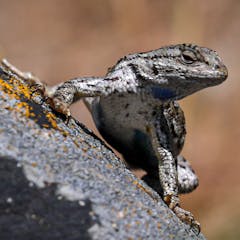
University of Colorado Denver

The University of Colorado Denver | Anschutz Medical Campus provides a diverse body of students with opportunities to enhance their lives, careers and research. Today, the university offers more than 130 programs in 13 schools and colleges at the undergraduate, graduate, doctoral and professional health levels.
Educating more than 14,000 students on our comprehensive campus in downtown Denver and more than 3,000 students in our research and advanced health care programs at the Anschutz Medical Campus, the University of Colorado Denver is one of the nation’s top public urban research universities.
Links
Displaying 1 - 20 of 36 articles

Ethnic minority auditors are less likely to become partners at accounting firms despite being better at their jobs than their white counterparts.

Presents are about giving, receiving and reciprocating, and how this cycle strengthens relationships.

From dark dragonflies becoming paler to plants flowering earlier, some species are slowly evolving with the climate. Evolutionary biologists explain why few will evolve fast enough.

If an alert from the federal government popped up on your phone, did you notice it? Did you know who it was from? Did you trust it?

There is something near-miraculous in the concept of tiny creatures, weighing just grams, making tracks and traces so long ago, that are now evident in rock.

Proposed legislation would identify and protect African American cemeteries. But it wouldn’t cover the remains of thousands of Black people in museum collections.

Two scholars of cities explain why dense, urban areas will survive – and thrive – long after the pandemic ends, and even if they don’t get a bailout.

Coronavirus cases have risen sharply across the Mountain West, Midwest and plains. Over 70% of nonmetropolitan counties are now “red zones,” suggesting viral spread is out of control.

A team of researchers found the southernmost tree and forest on Earth at the extreme tip of South America. Wind limits where trees grow on Isla Hornos and those wind patterns are shifting.

Four researchers studied California’s shelter-in-place orders to figure out how many lives were saved by its early enactment. Here’s what they found.

Neighborhood characteristics like pollution from busy roads, widespread public transit use and lack of community-based health care are putting certain communities at greater risk from COVID-19.

The flu shot is a bargain – and people are more likely to get it if they know that.

Despite many Irish-Americans claiming Protestant descent, unionists throughout history have found their rallying cries falling on deaf ears.

These trackways preserve an incredibly brief moment in time. More importantly, they tell us about ancient climates, and how turtle breeding ranges have changed over the millenia

An anthropologist who’s researched the dispossession of Native Americans and their enduring connections to ancestral places sees the value in asking ‘whose land are you on?’

As measles cases surge, people blame parents who refuse to vaccinate their children. A sociologist who has studied public health says anti-vaxxers may not be so different from the rest of us.

Female-centred health services are good, but they may detract from gender equality and men’s health.

Biometrics are more secure than passwords – but when they’re compromised fingerprints and retina scans are hard to reset. Brain responses to specific stimuli are as secure and, crucially, resettable.

Es una mentira reconfortante creer que, una vez que una pieza pasa a formar parte de la colección de un museo, está segura para la eternidad. Los museos se enfrentan a muchos peligros en su lucha por la conservación. La falta de presupuesto es uno de los principales.

It’s a comforting falsehood that once an artifact joins a museum’s collection, it’s safe for eternity. Museums face many foes in the fight to preserve – a lack of funds might be the biggest.
